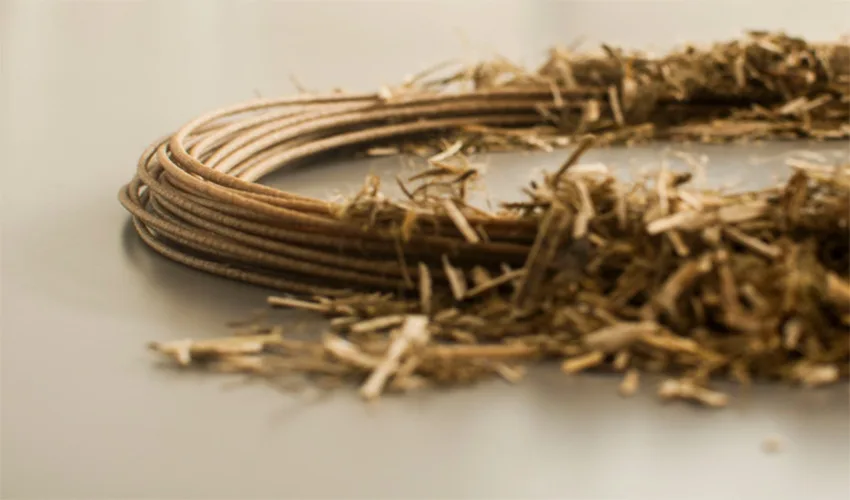Printing the Future: HempFilament Takes Center Stage in 3D Printing
The Hemp Nation Group (HNG) is at the forefront of innovation, not only in hemp cultivation and processing, but also in its exploration of new applications. Project 3D-Printing with HempFilament is a groundbreaking initiative that harnesses the potential of hemp for the exciting world of 3D printing.
From Hemp Stalk to Printer Filament:
The journey of hempfilament begins with the hemp stalk. Here’s a simplified look at the key steps:
- Decoretication: The hemp stalk undergoes decortication, separating the long, strong bast fibers from the woody core (hurd).
- Degumming: The fibers are then degummed, a process that removes natural waxes and pectins, making them easier to work with.
- Fibrilization: The degummed fibers are mechanically broken down into smaller strands.
- Blending: The hemp fibers may be blended with other bio-based materials or additives for specific properties.
- Extrusion: The blended material is melted and extruded through a die, forming a continuous filament of the desired thickness.
- Cooling and Coiling: The extruded filament is cooled and coiled onto spools, ready for use in 3D printers.
Printing with HempFilament: What You Need to Know
While standard 3D printers can often be used with hempfilament, some key considerations come into play:
- Print Nozzle Temperature: Hempfilament typically requires slightly higher printing temperatures (around 200-220°C) compared to traditional filaments like PLA. Ensure your printer can handle these temperatures.
- Print Speed: Due to the abrasiveness of hemp fibers, using a slightly slower printing speed can improve print quality and prevent nozzle wear.
- Heated Bed (Optional): A heated bed can be helpful for some hempfilament types, improving adhesion and preventing warping of the printed object.
- Wear and Tear: The abrasive nature of hemp fibers can cause more wear on printer nozzles compared to softer filaments. Regular cleaning and potential nozzle replacements may be necessary.
Benefits of HempFilament:
Hempfilament offers several exciting advantages:
- Sustainability: Hemp is a rapidly renewable resource, making hempfilament an eco-friendly alternative to traditional 3D printing materials.
- Strength and Durability: Hemp fibers offer superior strength and durability compared to many common filaments, making them suitable for functional prints.
- Biodegradability: Hempfilament is biodegradable, further reducing its environmental footprint at the end of its lifecycle.
- Unique Aesthetics: Hempfilament prints often have a distinctive natural texture and look, offering a unique aesthetic appeal.
Project 3D-Printing with HempFilament represents a significant step forward, not just for the hemp industry, but for the future of sustainable 3D printing. As HNG continues to refine its hempfilament technology and explore its applications, we can expect to see a surge in innovative and eco-friendly 3D printed products.
